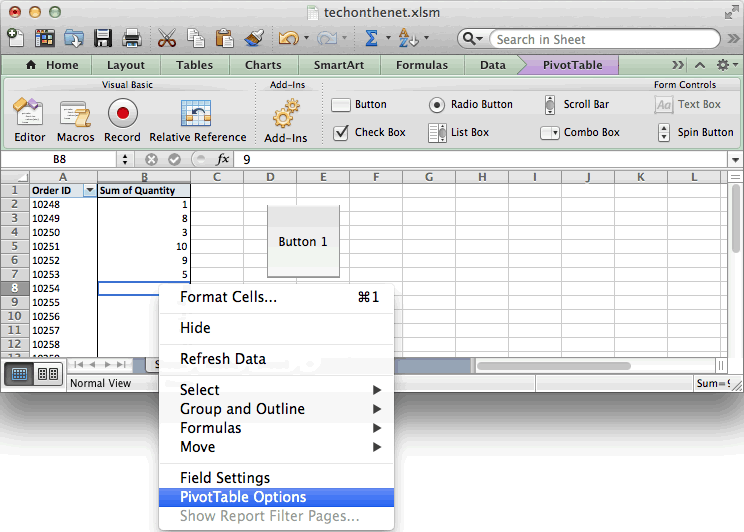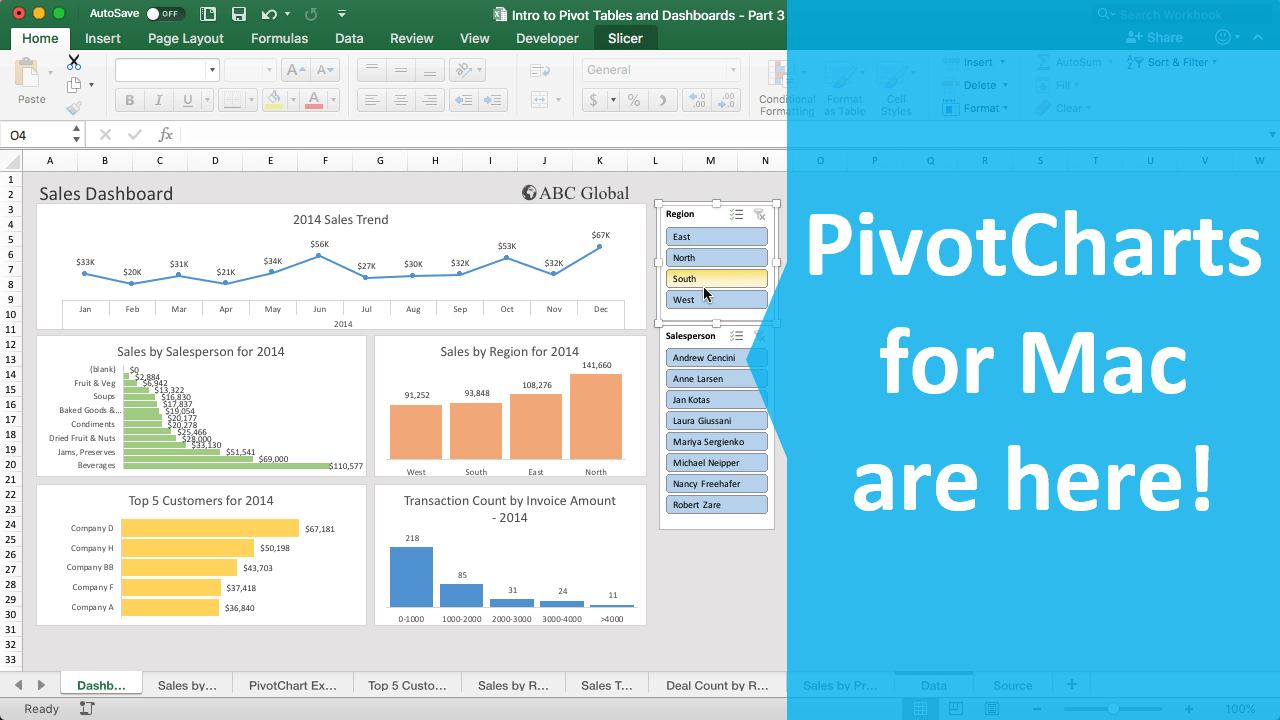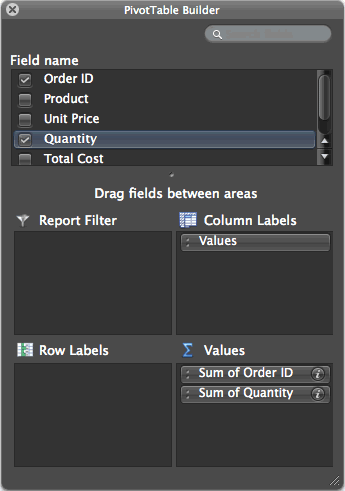

- #PIVOT TABLES EXCEL FOR MAC 2011 HOW TO#
- #PIVOT TABLES EXCEL FOR MAC 2011 MANUAL#
- #PIVOT TABLES EXCEL FOR MAC 2011 DOWNLOAD#
I would also like the user to select a row on the table and then be able to bring up another table depending on the row selected.basically so that the user can draw deeper into the information that they require. The user should then be able to select a particular row and insert it into the specified cell. I have been tasked with introducing userforms into an excel sheet and tbh I'm quite amazed that excel has this capability of adding userforms to excel sheets.Īnyway, I have 2 columns of data in an excel sheet and I wish to add this to a userform so that the userform displays the 2 columns beside each other with headings, like a table. Is there a way to copy each one - whether as a table or as text - into The first column of each table is the strength of the tablet,Įntered as 1 mg., 2 mg., etc. Would like to copy into a more comprehensive file I am creating inĮxcel. Manufacturers' websites and entered it into tables in Word, which I
#PIVOT TABLES EXCEL FOR MAC 2011 HOW TO#
Would like to have reference charts of how to identify the strength ofĮach tablet by its color and markings. The data in the table is information about my dad's medications. * The obvious solution of copying row by row into one Excel cell. What I am saving for when all else fails:

Inserting the table as a Document Object, which could be a workaround, * The various options for "Paste Special." The closest I got was * Formatting the Excel cells as text before pasting the data. Merging into one cell keeps the upper-left most data only. Get a warning that the selection contains multiple data values, and
#PIVOT TABLES EXCEL FOR MAC 2011 MANUAL#
I triedĬonverting the table into text with manual line breaks and tab stops toĭivide columns and rows, but that didn't solve my problem.Įxcel pastes the data into several rows. The first column of the table is a list of numbers.

I would like to copy a small table from Word into one cell in an Excel Which is the only current way I can get rid of it. Is there some shortcut to turn off this highlight feature other than restarting The cursor is still stuck in the highlighting mode and won't perform anyĭo you think this is a problem with my computer, the excel program? I have changed my mouse and this didn't help. I can close it only with the task manager but when I open it again, I can't select anything from the tool bars, do any work on the sheet or close the program. The biggest problem is that the highlighting won't turn off, no matter When I return to excel thousands and thousands of cells are blue. I move even in those other programs (I know this sounds confusing). Program on my computer, that excel page keeps highlighting wherever The cell turns blue and then wherever I move, it highlights those to. I will click on a cell to add information. When he's not crunching numbers, Tim climbs rocks, hikes canyons, and avoids malls.I have a problem sometimes. Tim has written self-teaching guides for Algebra, Trigonometry, Geometry, Precalculus, Advanced Precalculus, Permutations & Combinations, Mathematics of Money, Excel Loan & Mortgage Formulas, and Excel Pivot Tables. He holds degrees in mathematics and statistics from Stanford University and the University of Colorado. Tim Hill is a statistician living in Boulder, Colorado. Fully cross-referenced, linked, and searchable.Plenty of tips, tricks, and timesavers.Control references to pivot table cells.Unlink a pivot table from its source data.Filter data that you don't want to see.Calculate common statistics or create custom formulas.Combine numbers, dates, times, or text values into custom groups.Customize pivot tables with styles, layouts, totals, and subtotals.Rearrange pivot tables by dragging, swapping, and nesting fields.Create pivot tables from worksheet databases.
#PIVOT TABLES EXCEL FOR MAC 2011 DOWNLOAD#
You can download the sample workbook to follow along with the author's examples. This handy guide teaches you how to use Excel's most powerful feature to crunch large amounts of data, without having to write new formulas, copy and paste cells, or reorganize rows and columns. If you're working with hundreds (or hundreds of thousands) of rows, then pivot tables are the best way to look at the same information in different ways, summarize data on the fly, and spot trends and relationships. The jargon associated with Microsoft Excel's pivot tables ("n-dimensional cross tabulations") makes them look complex, but they're really no more than an easy way to build concise, flexible summaries of long lists of raw values.


 0 kommentar(er)
0 kommentar(er)
